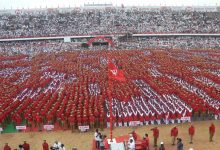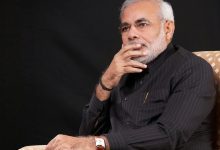India is the world’s largest arms importer. And, it may remain so for many years to come. Why should an arms manufacturer-exporter expand its production base to India to spend more, earn less and subject itself to the plethora of local rules, regulations, and inspections? Here’s a report, for Different Truths.
There is nothing to be surprised if India has attracted a tiny Rs.1.17 crore ($180,000) as a foreign direct investment (FDI) in defence production under the “Make in India” framework in the last four years. The reason is simple. India is the world’s largest arms importer. And, it may remain so for many years to come. Why should an arms manufacturer-exporter expand its production base to India to spend more, earn less and subject itself to the plethora of local rules, regulations, and inspections? This explains why the liberalisation of the FDI policy in defence failed to impress powerful foreign arms manufacturer-exporters to set up shops in India. China, India’s main military tormentor, is the world’s third largest defence power — after the USA and Russia — and the second largest in military spending, after the USA. China is continuously expanding its defence manufacturing capacity and increasingly arming India’s other border states such as Pakistan, Bangladesh, Nepal, Myanmar, Sri Lanka and even the small Maldives. Under the circumstances, India has little choice but to raise and update its weaponry through higher imports of sophisticated arms and weapons for its army, navy, air force and para-military services. Armament exporters to India are taking full advantage of the situation.
Lately, junior defence minister Subhash Bhamre told Parliament, in a written reply to a question, that “FDI of $0.18 million has been received in the defence industry sector from April 2014 to December 2017.” Even many NDA members were taken aback by the depressingly honest admission by Bhamre. Many wished such an important statement came from defence minister Nirmala Sitaraman, instead, with an explanation as to what the government plans to do to make the national defence more reliable and self reliant in the absence of FDI. In value terms, armament imports account for almost 70 per cent of India’s key defence hardware and software requirement. These days, no one is expected to fight successfully a hi-tech war with imported weapons for long. In 1950, China’s military-industrial might was much behind India’s. After the three-day army battle with India in 1962, in which the People’s Liberation Army captured 10,000 Indian prisoners of war (POWs) and defeated an unprepared Indian Army decisively, Communist China went in a big way to muscle its military power with massive indigenous production and development of modern weapons system to reach its current military status. Now, China is a major weapons exporter. India, on the other hand, learnt little. Its British period ordnance factories, defence shipyards — Mazagaon Dock and Garden Reach Shipbuilders — and Walchand Hirachand-established Hindustan Aircraft Limited (HAL) in Bangalore are still the main stay of India’s defence manufacturing. The British-Indian government bought 33 per cent stake in HAL in April 1941 by investing Rs. 25 lakhs as it believed this to be strategically imperative during the 2nd World War.
Almost all over the world, the defence manufacturing industry is government-controlled, directly or indirectly. Massive investments are made in defence manufacturing by countries such as the US, China, Russia, Germany, France, the UK, Israel, Italy, South Korea and Ukraine. Together, they account for 90 per cent of the global arms trade. The US defence budget of over $600 billion in 2016 represented 3.3 per cent of its GDP. China accounts for the second largest defence budget. Listed by the Stockholm International Peace Research (SIPRI) 2017 Fact Sheet, China’s defence spending in 2016 was around $215 billion. The actual spending could be far more, even exceeding $300 billion. Comparably, India’s defence budget was a modest $55.9 billion. However, this budget figure hardly represents India’s actual expenditure on defence production. Pay and perks for defence personnel — combatants and non-combatants — constitute a big part of defence expenditure. Interestingly, India’s Parliamentary Standing Committee report on defence said over three years to 2017-18, there was a nine percent decline in budget allocation for capital investments against requirements, or “projections” in officialese, a factor that could delay procurement and modernisation of the armed forces. The Indian Air Force capital budget was 46 percent lower than its requirements, Army’s was 41 percent and Navy’s 32 percent, the report said. One gets an impression that whatever the government may say about India’s high defence preparedness, it may be neither true, nor dependable.
The least talked about the role played by the Defence Research and Development Organisation (DRDO) in India’s defence preparedness is the best. The 60-year-old Delhi-headquartered DRDO had little government encouragement and from the defence, manufacturers to play a very active part to help put the domestic defence manufacturing on top gear. It has a network of over 50 laboratories, around 5,000 scientists and some 25,000 other scientific, technical and supporting personnel. Not many know why the country’s defence preparedness is so much import dependent despite the existence of such a massive research and development outfit as DRDO.
Bhamre would have done well to explain the circumstances under which his government had to sign as many as 70 ‘capital procurement’ contracts worth over Rs.1,25,000 crore with overseas armaments manufacturers and dealers to acquire radars and missiles from Israel, aircraft and artillery guns from the US, fighters and ammunition from France, rockets and simulators from Russia. Interestingly, only a few days ago, the defence ministry released a draft Defence Production Policy 2018 to catapult India into the world’s top five defence producers. With unusual boldness and clarity, it stipulates 13 areas where India must achieve self-reliance by 2025. They are: manufacturing fighter aircraft, medium lift and utility helicopters, warships, land combat vehicles, autonomous weapon systems, missile systems, gun systems, small arms, ammunition and explosives, surveillance systems, electronic warfare (EW) systems, communication systems, and night fighting enablers. But, it could be easier said than done. One wonders why it took 56 years after the Sino-Indian war to draft such a policy.
Nantoo Banerjee
©IPA Service
Photo from the Internet





 By
By

 By
By
 By
By